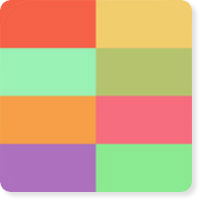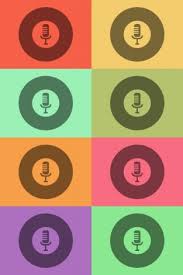DailyBean
LQ: 9.6
Recommended Age: 4+
Skills Used: Self-Awareness, Self-Control, Reading, Writing

Keezy is the app for music lovers. It transforms users’ mobile devices into a personal collection of 8 user-curated sounds. It’s a series of color coded samples, which can range from beat-boxed bass and snare drum sounds, harmonies, and any other sound users can record into their device’s microphone. A good mix of rhythm and melody are important for users who are trying to compose a piece. Or they can just use Keezy as a drum machine, in which they sing, rap, dance, or recite poetry to. Users press one of the eight microphones on a set of colored tiles and record their sound. Although it’s a fairly simple app, designed primarily to be fun and engaging, Keezy can be a powerful tool for strengthening important thinking skills like flexibility and self-awareness, while fostering an interest in making unique music at an early age. Because of it’s ease of use, Keezy is recommended to children ages four and older.
 With Keezy's DIY jukebox functionality, it's important that users experiment with a variety of sounds. Booming bass imitations and clear snare sounds can really make for a strong percussive track. Users can either alternate between their recorded bass and snare sounds by individually pressing the corresponding tile -- or click them at the same time for a fuller sound. On top of the rhythm, users are encouraged to record their own vocals, which can range from tasteful hums to articulated lyrics. Because the app allows for 8 separate sounds, users can record three and four part harmonies and play them back simultaneous by clicking and holding the tiles that they recorded the sounds on. Simply put, users should experiment with the full range of their sound palettes, exploring the many ways that 8 separate tracks can work together. And if a harmony or percussion sounds is off time, all users have to do it delete it with a single swipe and record it again. Soon, a song will begin to take shape.
With Keezy's DIY jukebox functionality, it's important that users experiment with a variety of sounds. Booming bass imitations and clear snare sounds can really make for a strong percussive track. Users can either alternate between their recorded bass and snare sounds by individually pressing the corresponding tile -- or click them at the same time for a fuller sound. On top of the rhythm, users are encouraged to record their own vocals, which can range from tasteful hums to articulated lyrics. Because the app allows for 8 separate sounds, users can record three and four part harmonies and play them back simultaneous by clicking and holding the tiles that they recorded the sounds on. Simply put, users should experiment with the full range of their sound palettes, exploring the many ways that 8 separate tracks can work together. And if a harmony or percussion sounds is off time, all users have to do it delete it with a single swipe and record it again. Soon, a song will begin to take shape.
 Users have to be able to accurately judge the quality of the sounds they record if they intend on making a solid tune or rhythm. They must constantly adjust the volume, pitch, and timing of their voice for the tune to remain in key and in time. There's no mixing board, therefore each new sound byte should be recorded at a volume consistent with the rest of the recorded bits -- unless of course, there is a certain sound that users intend to record at a higher or lower volume. But users must understand the difference between nuance and consistency, finding a good middle ground to produce a cohesive collection of sounds that is not jarring or too quiet. Before the recording process begins, users should think about the nature and timbre of their own voice. Is it low or high? A higher voice can produce nice ambient harmonies, while a lower voice might be slightly better at making those low frequency running bass notes. It's always interesting to hear one's own voice played back for them to hear. Users might even be able to discern qualities about their voice that would have never otherwise been revealed.
Users have to be able to accurately judge the quality of the sounds they record if they intend on making a solid tune or rhythm. They must constantly adjust the volume, pitch, and timing of their voice for the tune to remain in key and in time. There's no mixing board, therefore each new sound byte should be recorded at a volume consistent with the rest of the recorded bits -- unless of course, there is a certain sound that users intend to record at a higher or lower volume. But users must understand the difference between nuance and consistency, finding a good middle ground to produce a cohesive collection of sounds that is not jarring or too quiet. Before the recording process begins, users should think about the nature and timbre of their own voice. Is it low or high? A higher voice can produce nice ambient harmonies, while a lower voice might be slightly better at making those low frequency running bass notes. It's always interesting to hear one's own voice played back for them to hear. Users might even be able to discern qualities about their voice that would have never otherwise been revealed.
All membership plans come with full access to our entire suite of tools learning guides, and resources. Here are a few of the ones we think you’ll like the most: